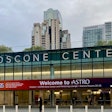This year, more than 2.8 million basal cell carcinoma and an estimated 700,000 squamous cell carcinoma skin cancers will be diagnosed in the U.S. alone, with many millions more in the rest of the world, according to an estimate from the Skin Cancer Foundation. Superficial radiation therapy (RT) is an emerging option for many of these patients.
While most superficial cancers will be surgically excised, superficial RT could be better for patients with small tumors in locations where surgery causes disfiguration. Superficial radiation therapy uses a low-energy radiation beam of 100 kV and penetrates the top surface layer of the skin, avoiding deep tissue damage that can cause scarring. Its precise beams directly target the tumor, sparing surrounding tissue.
The use of superficial radiation therapy and orthovoltage devices proliferated in the 1950s and 1960s for radiation therapy. These fixed devices required a dedicated treatment room and fell into disuse as linear accelerators were being purchased.
With the introduction of a compact, relatively lightweight, mobile superficial radiation therapy system in 2007, use of superficial RT to treat small basal cell and some squamous cell carcinomas began to increase. For the patient and for the economy, superficial radiation therapy provides a lower-cost, less clinically intensive alternative to Mohs surgery or conventional electron-beam radiotherapy.
The treatment is not for every patient, however. It tends to be prescribed for tumors in areas that are either difficult to treat, such as the eyelid or earlobe, or where plastic surgery may cause disfigurement, such as the face and in particular the nose. The tumors need to be small and shallow, and they cannot be melanomas.
AuntMinnie.com talked with two radiation oncologists specializing in skin cancers to learn how they are using superficial RT in their practices. Both use a compact mobile system (SRT-100, Sensus Healthcare) cleared for clinical use in Asia, Canada, China, Europe, and the U.S.
MIMA Cancer Center
Dr. Nanialei Golden, medical director at MIMA Cancer Center in Melbourne, FL, and associate professor of radiation oncology at the University of Central Florida College of Medicine, was introduced to the use of superficial RT for nonmelanoma skin cancers during her residency at Northwestern Memorial Hospital in Chicago. When she joined Holmes Regional Medical Center in Melbourne in 1998, she discovered that a system was being used there as well.
When a new physician-owned cancer treatment center opened in 2003 literally across the street, she joined the radiation oncology staff there. During 2005 and 2006, the center had a heavy patient workload, with linear accelerator treatment schedules fully booked. When the U.S. Food and Drug Administration (FDA) cleared the SRT-100 system in February 2007, the MIMA Cancer Center became one of the first in the country to purchase the device. It has been in steady use ever since.
Approximately 50 patients with nonmelanoma skin cancer receive radiation therapy at the center each year. Approximately half of these patients qualify for superficial radiation therapy.
Golden selects patients based on the type, size, and depth of the tumor. Approximately 90% have been diagnosed with stage I basal cell carcinoma, and the remainder have squamous cell carcinoma. Tumors do not exceed 2.5 cm.
She recommends superficial RT for patients with these types of tumors on the face, eyelid, or earlobe, where a precise beam of radiation is needed and where surgery may cause disfiguration or scarring. She also recommends its use, as clinically appropriate, in locations where electron-beam therapy may be difficult.
Patients tend to be referred by MIMA's dermatologists or plastic surgeons when they feel that radiation therapy may be an option in lieu of surgery or when it is needed in addition to surgery. After examining the patient and reviewing the pathology to determine if the individual qualifies for superficial RT, Golden will schedule an hour-long consultation with the patient to explain all treatment options and to discuss superficial radiation therapy in detail.
If a patient elects to have superficial radiation therapy, a treatment plan is developed by Golden and a medical physicist, and the patient is fitted for a mask.
"We prefer to use a mask because it immobilizes the patient and prevents them from gazing around the treatment room," she explained. "We also test to make sure a patient is not claustrophobic in a mask. If a person cannot tolerate a mask, we will use paper tape on their face that serves as a reminder not to move."
A round cone that resembles a plastic disk is selected based on the size of the treatment area. Golden will cut a lead shield if the treatment area is irregular or elliptical in shape.
A typical course of treatment for a small basal cell carcinoma is a radiation dose of 50 Gy delivered in 20 fractions over a four-week period. Patients are scheduled in 15-minute slots, and the majority of time is spent positioning the patient. Patients who are receiving treatment to an eyelid are fitted with a shield similar to a contact lens, on which the eyelid sits.
When eyelids are exposed to radiation, the eyelashes will fall out, and they typically do not regrow. Other toxicities include the appearance of reddened skin two weeks into treatment, which tends to get more severe as treatment continues.
"Skin may also peel and ooze, similar to the worst sunburn you can experience," Golden said. "Two weeks following treatment, as skin replenishes itself, the redness starts to diminish. I typically find that patients may have minor skin discoloration after two weeks. However, only 10% still have that six months following treatment, and even fewer have textural changes in the skin from its thinning."
In addition to most patients showing no sign of treatment after six months, cost is also substantially lower than with other treatment options. A typical treatment costs about $1,500, Golden said.
There are also financial advantages for the cancer center. Patient treatments times are clustered in the morning or afternoon. The radiation therapist who performs simulations is responsible for the treatment, eliminating the need to add additional staff.
Tanner Medical Center
Radiation oncologist Dr. Anna Harris is a relatively new user of the mobile superficial RT device, having just joined Tanner Medical Center in Carrollton, GA, in the summer. Her colleague, Dr. Richard Bland, has been using the device for years to treat 60% of an estimated 35 patients each year who qualify.
Most of the patients are referred by dermatologists. When determining whether to recommend superficial radiation therapy, Harris also considers the age of the patient and the location of the tumor. If surgical excision is an option, she doesn't want to expose patients to radiation that could potentially cause other cancers, especially if patients are in their 30s or early 40s.
She also weighs the risks of surgery, such as disfigurement or partial facial paralysis, for example. Tumor thickness and pathology are also key decision points. She does not like to recommend superficial radiation therapy for squamous cell carcinomas if they are deeper than their visual appearance.
When it's an appropriate treatment, Harris is a strong advocate of superficial radiation therapy, either exclusively or in conjunction with electron-beam radiotherapy. She described a recent case in which a patient with a large tumor near the eye initially had electron-beam radiotherapy to shrink the tumor, followed by superficial radiation therapy.
A typical patient is prescribed 60 Gy delivered in 30 daily treatments. If there is no concern about cosmetic side effects, the patient might have treatments given with a higher dose over 15 to 20 days.
"Treatment planning and the actual treatments are much shorter than for conventional radiotherapy," she said. "Our patients love it. The treatments are fast, and the side effects are fewer."
"The type of toxicities depends on the site of the skin lesion, but most patients experience various levels of skin irritation," she said. "When treatment is near the lip, buccal mucosa can be irritated. And there can be patchy alopecia -- hair loss -- if the tumor is near the hair line along the scalp or along an area where facial hair is located."
Most skin cancer patients treated at Tanner Medical Center have never heard of superficial RT for nonmelanoma skin cancers. For this reason, Harris includes a discussion of the treatment when giving lectures at public venues in the greater Carrollton are.
"People are amazed when they hear about this treatment option," she said. "Most assume that if you get a cancerous skin lesion, which is common in the South, you need to have surgery. For some, superficial radiation therapy provides a welcome alternative."



















